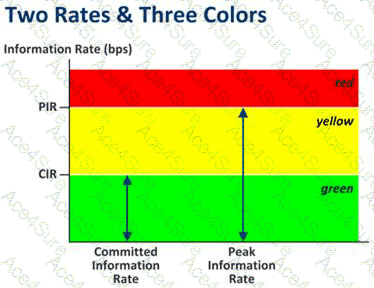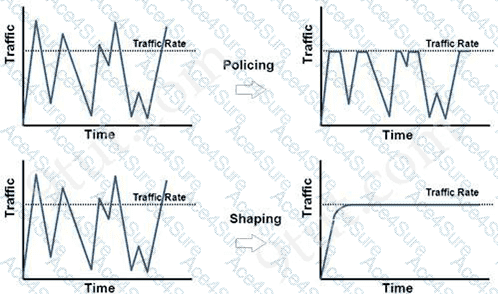CIR (Committed Information Rate) is the minimum guaranteed traffic delivered in the network.
PIR (Peak Information Rate) is the top bandwidth point of allowed traffic in a non busy times without any guarantee.

+ Policing: is used to control the rate of traffic flowing across an interface. During a bandwidth exceed (crossed the maximum configured rate), the excess traffic is generally dropped or remarked. The result of traffic policing is an output rate that appears as a saw-tooth with crests and troughs. Traffic policing can be applied to inbound and outbound interfaces. Unlike traffic shaping, QoS policing avoids delays due to queuing. Policing is configured in bytes.
+ Shaping: retains excess packets in a queue and then schedules the excess for later transmission over increments of time. When traffic reaches the maximum configured rate, additional packets are queued instead of being dropped to proceed later. Traffic shaping is applicable only on outbound interfaces as buffering and queuing happens only on outbound interfaces. Shaping is configured in bits per second.

Therefore in this case we can only policing, not shaping as traffic shaping is applicable only on outbound interfaces as buffering and queuing happens only on outbound interfaces. Moreover, BGP traffic is not important so we can drop the excess packets without any problems.
And we only policing the PIR traffic so that the route processor is not overwhelmed by BGP calculation.
Note: The “set-prec-transmit” is the same as “transmit” command except it sets the IP Precedence level as well. The “set-clp-transmit” sets the ATM Cell Loss Priority (CLP) bit from 0 to 1 on the ATM cell and transmits the packet.




